Rare Rides Icons: The Mitsubishi Diamante Story (Part II)

In Part I of our Rare Rides Diamante coverage, we talked almost exclusively about our subject’s predecessor, the Sigma. Alternatively called Galant Σ, it was a hardtop luxury version of the standard Galant offered in the US market. It was dated when it arrived, too small, and not differentiated enough from the Galant to warrant its high price. U.S. customers mostly ignored it, and Canadians never knew it existed since they didn’t receive any Mitsubishis until 2002. Headed into the Nineties, Mitsubishi had no upscale sedan offering at all in North America, as the Galant was the firm’s largest car. That changed in 1992 with the arrival of the all-new Diamante.
Mitsubishi was more determined its new upmarket sedan would be successful this time around. The Sigma was a product of the early Eighties and was in production before Japanese competitors created luxury brands like Acura. Mitsubishi was caught by surprise when Acura debuted in 1986 and wanted to compete for a share of the new Japanese luxury pie. Its new offering entered production in Japan in 1990, shortly after Lexus made its North American debut.
The first Diamante on sale maintained the same basic principles as the Sigma that came before it: A conservative frameless hardtop sedan. The hardtop body style was built exclusively at Mitsubishi’s factory in Nagoya, Japan. Focused more on luxury and technology than the other versions, the hardtop was the flagship of the line. It was sold in exactly two markets: Japan and America.
Shortly thereafter a more traditional body style arrived, and took the Diamante name for certain markets but was simultaneously branded as Sigma (in Europe and Japan in particular). The sedan was less sporty than the hardtop and used slightly different styling front and rear. It was the second body style to enter production, about five months after the hardtop. The Diamante sedan lead an interesting life: It was transformed into a more mass-market vehicle, the Magna, and built-in Australia for world markets. Interestingly, the Magna had its own luxury version different from the Diamante called Verada. Both Magna and Verada were in their second generation of Australian production and were replacements for their former iterations. Those were based on the old Sigma but not quite the same.
The Australian models lead us to the third and final Diamante body style, the wagon. It arrived three model years after the hardtop and was based on the secondarily introduced Diamante sedan. The wagon was produced solely in Australia alongside the Magna and Verada that wore different bodies. Keeping up with the international fun so far?
All Diamantes were based once again on the Galant platform, like the Sigma was previously. But this time there was a difference: Mitsubishi made the Galant platform longer by 2.59 inches, which made the platform midsize. The platform edits made quite a difference in wheelbase compared to the old Sigma, up to 107.1 inches from 102.4. The wagon’s wheelbase was a hair longer, at 107.2 inches. Width increased generously as Mitsubishi created a midsize for international markets, up from 66.7 inches to 69.9″.
Overall length grew about 10 inches, from 180.3″ in the old Sigma to 190.2 inches in the new Diamante. The wagon was slightly larger at 192.4 inches. For reference, the Acura Legend of 1990 was 190.6 inches long, and 68.9 inches wide. Perhaps benchmarking of the Legend’s size happened at Mitsubishi.
Unlike the Sigma that offered inline-four engines in most markets outside the United States (that was V6 only), Diamante went all-in on the V6. Three different displacements of V6 were available, of 2.0, 2.5, and 3.0 liters. The smallest 2.0 was the same 6G71 from the Sigma, but a new 6A12 V6 of the same size was available and had 24 valves. The 2.5-liter was the 6G73, which also had 24 valves. You’d find that engine in the first generation Chrysler Cloud cars a couple of years later.
The 3.0-liter was the 6G72 in standard or 24-valve versions and was used in many things including Mitsubishi’s largest car the Debonair, the sporty GTO, as well as many Dodge products. There were no diesels available in any Diamante this generation. Transmissions were a four-speed automatic, and a five-speed manual was available for the driving enthusiast. Once again, the five-speed was off-limits to American customers.
Also of interest to enthusiasts, Mitsubishi was early in the all-wheel-drive sedan game with the Diamante. Used only on the hardtop version and only in the Japanese market, Diamante was available with AWD in its first generation. Trim levels were different for the AWD Diamante, and it used a different suspension to front-drive versions. Front-drive Diamantes used a fully independent setup, with MacPherson struts at the front and a multilink set up at the rear. In general, in the Japanese market, trims were determined by engine selection. The engine size had a direct effect on the annual tax paid by the owner. Luxury electronic equipment was layered on appropriately as the engines got larger.
Diamante was sold in the Japanese market as a bit of a tech marvel. Mitsubishi implemented the first radar cruise control system in the world with Diamante, which it marketed as Preview Distance Control. There was also a unique traction and trace control combination system that debuted on the Diamante. Eventually, the system was renamed Active Skid and Traction Control. The system used sensors much as you’d expect to monitor grip and throttle through handling situations. However, the system was proactive and used preventative braking and throttle interference. That was in great contrast to other traction control systems of the time that were solely reactive. Other electronic goodies included a computer-controlled suspension, and that old eighties holdout, four-wheel steering.
The Diamante was a clean break on styling compared to the outgoing Sigma. It wore its size much better, with less front-drive overhang. Styling was generally slick, smooth, and BMW-esque if one considered the quad headlamp arrangement. The grille came to a sporty point in the middle and was separated into two simple sections of black slats. Bumpers were more rounded and softer, approved for the Nineties. Door handles changed from a chrome dogleg style to a better-integrated pull handle. Smooth chrome trim surrounded the windows, which did away with any chunky rubber weather stripping.
At the rear, the curves blended into a simpler rear end, with better-integrated tail lamps. Though other markets saw the rear lamps joined by a stylish heckblende (and here on the wagon), that feature didn’t make it to the North American Diamante sedan. Instead, lamps were two simple red and amber lenses. Mitsubishi used a similar lamp style in the circa 2016 Outlander, and I’m not joking. The more modern look was finished by some nice five-spoke alloys in place of the Sigma’s weird twisted lace discs. The overall look was much improved over Diamante’s predecessor, and much more upscale.
Available from 1992 as a sedan and in 1993 as a wagon, the first-generation Diamante was shipped from Japan and Australia to the U.S. but allowed limited choice for the customer. All examples were automatic as mentioned but varied via trim in the version of the 3.0-liter V6 they used. Base trims used a SOHC version of the 6G72 engine that made 175 horsepower, while the LS used the DOHC version of the same engine, good for a much more impressive 202 horsepower. The DOHC power meant a 0-60 time of 9.2 seconds, which was decent in 1992. The electronic goodies from the Japanese market were largely excluded from American models, with one exception in the aforementioned traction and trace control. The traction control was only available as part of a handling package on the LS trim.
There was generous standard equipment on both trims of Diamante, with an airbag as standard. Optional things like cruise control, nicer alloys, and ABS on the base model were standard on the LS. Leather was optional on both trims, as was a sunroof. From 1993 onward, Mitsubishi renamed the base trim to ES. There was a singular update to the first-gen Diamante, in 1994. That year, smoother revised tail lamps arrived, as well as a more modern-looking steering wheel. Circa 1992, a base Diamante asked $19,939 ($40,963 adj.), while an LS was considerably more expensive at $25,135 ($51,637 adj.). Sounds expensive, until priced against a comparable Legend sedan that began at $28,435 ($58,417 adj.) and ranged to $35,245 ($72,408(!) adj.).
More revisions occurred for 1995 as Mitsubishi slimmed the Diamante lineup in preparation for a new model. The ES sedan was available only to fleet buyers that year, while the LS sedan and both trims of wagon remained at dealers. Additional slimming occurred in 1996, as the Diamante aged out and were made fleet only. By that time, the new generation Diamante was already on sale in the Japanese market. 1995 was the last year for a Diamante wagon in America, as wagon-hating customers passed it by.
The first Diamante’s last year was another odd one since in 1996 there were none available to regular consumers. The new Diamante was delayed until late in 1996 when it debuted as model-year ’97. The second Diamante would be the last, and Mitsubishi aimed even higher with it than it had before. The premium Diamante was pitched against a big player: the ES 300. More next time.
[Images: Mitsubishi]

Interested in lots of cars and their various historical contexts. Started writing articles for TTAC in late 2016, when my first posts were QOTDs. From there I started a few new series like Rare Rides, Buy/Drive/Burn, Abandoned History, and most recently Rare Rides Icons. Operating from a home base in Cincinnati, Ohio, a relative auto journalist dead zone. Many of my articles are prompted by something I'll see on social media that sparks my interest and causes me to research. Finding articles and information from the early days of the internet and beyond that covers the little details lost to time: trim packages, color and wheel choices, interior fabrics. Beyond those, I'm fascinated by automotive industry experiments, both failures and successes. Lately I've taken an interest in AI, and generating "what if" type images for car models long dead. Reincarnating a modern Toyota Paseo, Lincoln Mark IX, or Isuzu Trooper through a text prompt is fun. Fun to post them on Twitter too, and watch people overreact. To that end, the social media I use most is Twitter, @CoreyLewis86. I also contribute pieces for Forbes Wheels and Forbes Home.
More by Corey Lewis
Latest Car Reviews
Read moreLatest Product Reviews
Read moreRecent Comments
- SCE to AUX This was the same car I had (05 xB, stick, "camouflage" color) for 7 years - great car.We called ours "The Lunchbox". I added aftermarket wheels, and the 3rd-party cruise control the dealers could install.It suffered only two failures: bad window switch in week 2 (dealer fixed in 1 hour), bad trailing O2 sensor (fixed myself for $70). Fuel economy was always 28-34 mpg.It was a potential death trap, and ride quality became unbearable after 2 hours. I once did a 10-hour round trip in it and could barely walk after.Traded it for a 2012 Leaf, which was a better car in some ways.
- Bd2 The "e" nomenclature signifies the e-ATPs which BMW is pursuing.
- Dave M. I'm sorry to see any storied name go away. The lifespan of the Malibu has fit perfectly in my lifetime years-wise. Some of the highlights include the first and second generations, the '78 revamp (very clean design), and the 2005 generation. Ford, GM and Mopar gave this segment away by allowing Toyota and Honda a foot in the door and then always having to play catch-up. How hard is it to make a truly competitive sedan at a profit? Obviously, Japan Inc. figured it out.I've driven a few rentals these past years; the Malibu got the job done but honestly the Passat and Altima were my rental preferences.
- Kcflyer actually yes. It's a shame that a product this uncompetitive can still outsell GM's entire EV offerings. Those products have had billions thrown at them. Imagine how nice the new Malibu, Impala, SS, and Lacrosse would be with that kind of commitment.
- 3SpeedAutomatic Nope....




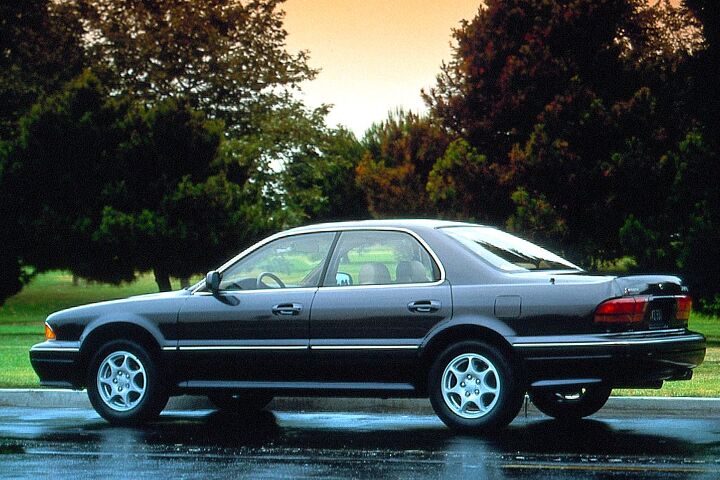



















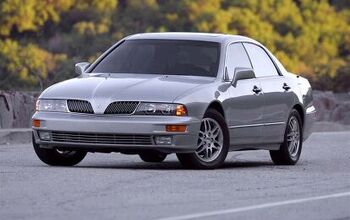
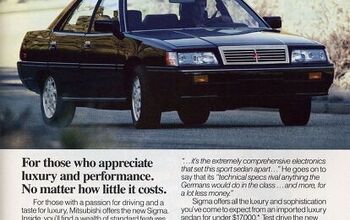

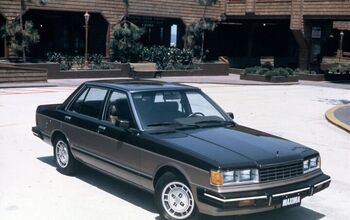
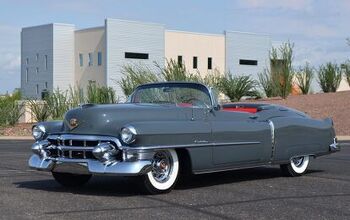










Comments
Join the conversation
Lil paint job and it’s ready. Classic at its finest.
I have one currently but no longer wants to fully start only cranks, battery is good and electronic lights come on and starts after sitting for x amount of hours if anyone has some tips it’ll be very appreciated.